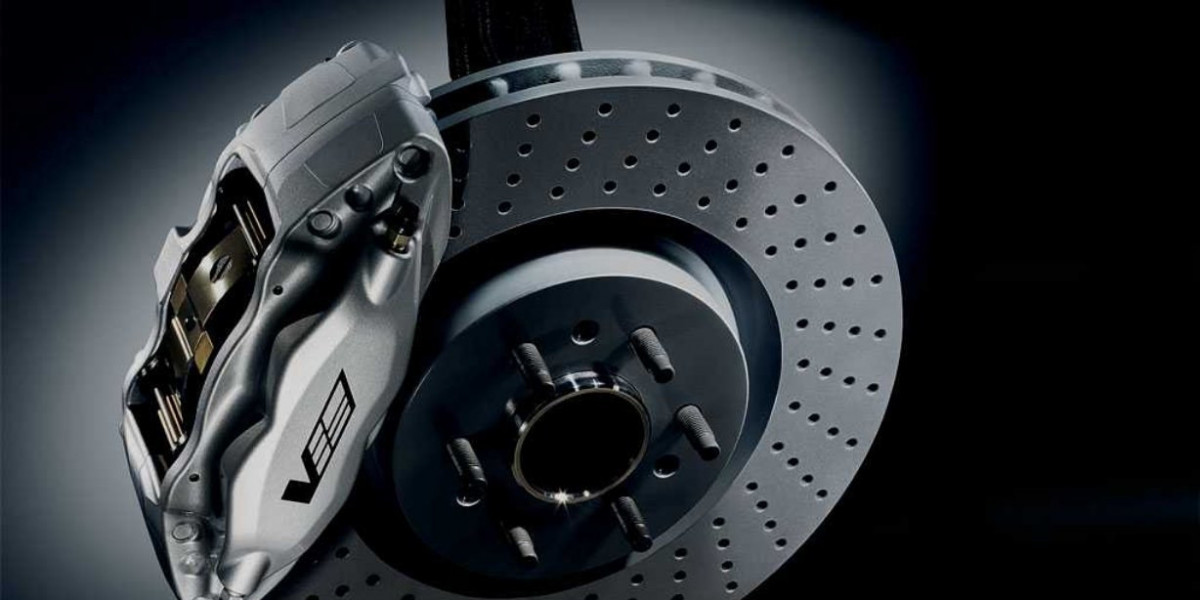The automotive brake system market is witnessing a wave of technological innovations that are not only enhancing vehicle safety but also improving driving comfort, fuel efficiency, and integration with advanced automotive technologies. As vehicles evolve—particularly with the rise of electric and autonomous models—braking systems must adapt, offering smarter, more responsive, and eco-friendly solutions.
This article explores the most impactful innovations reshaping the global automotive brake system industry and examines how these advancements are influencing vehicle design, performance, and the future of mobility.
1. Brake-by-Wire Technology
One of the most significant innovations in the industry is the shift from traditional hydraulic braking to brake-by-wire systems. This advanced system eliminates mechanical linkages and instead uses electronic signals to control braking functions.
Faster response times: Brake-by-wire systems provide quicker response, enhancing overall vehicle safety and driving performance.
Weight reduction: Eliminating hydraulic components reduces the weight of the braking system, which contributes to better fuel efficiency or increased battery range in electric vehicles.
Customization and control: The system allows for tailored braking experiences, such as adaptive braking in different driving modes or conditions.
Brake-by-wire is also more compatible with autonomous vehicle systems, which require precision and reliability in every function, including braking.
2. Regenerative Braking Systems
A key innovation especially relevant to electric and hybrid vehicles is regenerative braking. This technology captures kinetic energy during braking and converts it into electrical energy to recharge the battery.
Enhanced energy efficiency: By recovering energy that would otherwise be lost as heat, regenerative braking extends the range of EVs.
Reduced wear and tear: Since the electric motor assists in slowing the vehicle, mechanical brake components experience less wear, leading to lower maintenance costs.
Smooth integration: Modern systems offer seamless transitions between regenerative and mechanical braking, enhancing driving comfort.
Regenerative braking is now considered a standard feature in most EVs, playing a crucial role in sustainable vehicle operation.
3. Advanced Driver Assistance System (ADAS) Integration
Innovations in brake systems are closely tied to the development of ADAS features, which include automatic emergency braking (AEB), collision avoidance, and adaptive cruise control.
Proactive safety: Braking systems integrated with ADAS can automatically apply the brakes if a potential collision is detected, preventing accidents.
Sensor fusion: Combining input from radar, cameras, and LiDAR, these systems make real-time braking decisions, enhancing reliability.
Driver support: Features like hill start assist, lane keeping, and traffic jam assist all rely on advanced braking control to function properly.
This integration is helping to move the industry toward fully autonomous vehicles, where responsive and intelligent braking is essential.
4. Electromechanical Braking (EMB)
Electromechanical braking systems represent a cutting-edge approach to vehicle control by replacing traditional hydraulic pressure with electric actuators at each wheel.
Enhanced precision: EMB systems offer highly precise braking force at each wheel, improving vehicle stability and cornering control.
Independent braking: Since each wheel can be controlled independently, EMB opens up possibilities for torque vectoring and enhanced traction.
Simplified maintenance: Without hydraulic fluid, EMB reduces the need for traditional brake maintenance.
Although still in early stages of adoption due to cost and complexity, EMB systems are expected to become more widespread as EVs and autonomous vehicles proliferate.
5. Lightweight and Sustainable Brake Materials
To meet environmental goals and improve fuel economy, manufacturers are increasingly focusing on lightweight materials and low-emission braking solutions.
Ceramic and carbon-composite rotors: These materials offer high heat resistance and durability with lower weight compared to traditional cast iron components.
Copper-free brake pads: Reducing copper and other harmful elements in brake pads helps decrease environmental pollution caused by brake dust.
Noise-reducing compounds: Innovative materials are also used to reduce squealing and vibration, enhancing comfort.
This move toward sustainability aligns with global efforts to reduce vehicle emissions and resource consumption, particularly in urban environments.
6. Smart Brake Systems with AI and IoT
Emerging technologies in artificial intelligence (AI) and the Internet of Things (IoT) are now being integrated into brake systems for predictive maintenance and real-time performance monitoring.
Condition monitoring: Sensors embedded in brake components can monitor wear levels, temperature, and performance, alerting drivers or fleet managers when maintenance is needed.
Data-driven insights: AI can analyze braking patterns to predict potential failures or optimize system settings based on driving habits.
Fleet applications: In commercial vehicles, these smart systems help improve uptime, reduce costs, and enhance safety for drivers and cargo.
Such smart systems are especially valuable for logistics, ride-sharing, and other fleet-based industries that prioritize reliability and cost-efficiency.
7. Adaptive Braking Based on Driving Conditions
Modern brake systems are now capable of adapting their behavior based on terrain, weather, and driving style.
Dynamic braking: Sensors and software work together to adjust braking force depending on load, road surface, and slope.
Weather-adaptive systems: In icy or wet conditions, the system can apply brakes more gradually to prevent skidding or loss of control.
Performance tuning: In sports cars or luxury vehicles, adaptive systems provide drivers with different modes like “comfort,” “sport,” or “track” that fine-tune the braking response.
These personalized braking experiences are becoming standard in higher-end vehicles and are trickling down into more mainstream models.
Conclusion
The automotive brake system market is at the forefront of a transformative era. Innovations such as brake-by-wire, regenerative braking, ADAS integration, and smart systems are redefining what’s possible in terms of safety, efficiency, and control. These advancements are not just enhancing individual vehicle performance—they’re also supporting the broader goals of automation, sustainability, and connected mobility.
As the industry moves forward, companies that invest in innovation and adapt to the rapidly changing landscape will lead the way in shaping the future of automotive braking technology.
Discover more: https://www.pristinemarketinsights.com/automotive-brake-system-market-report








